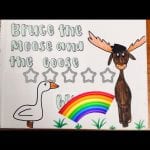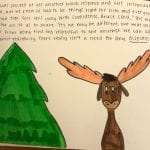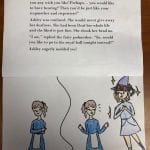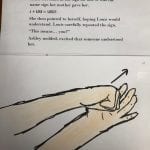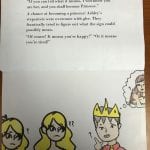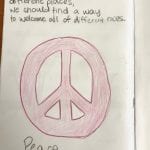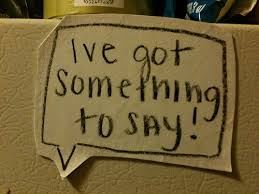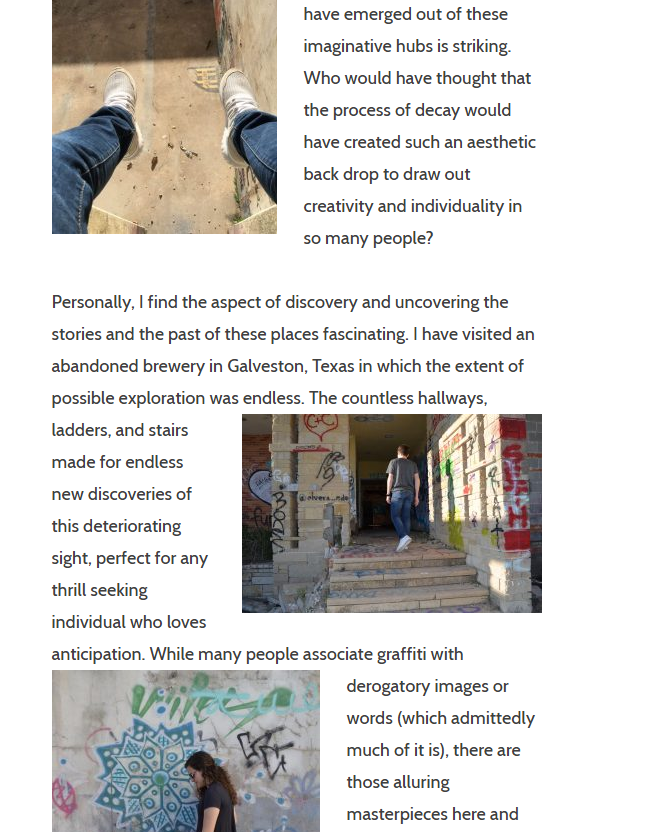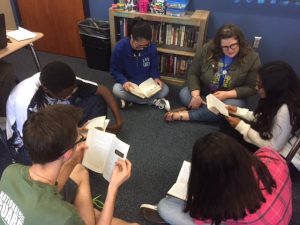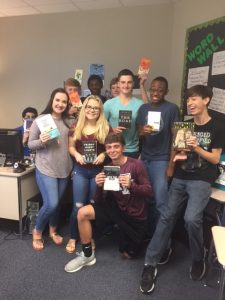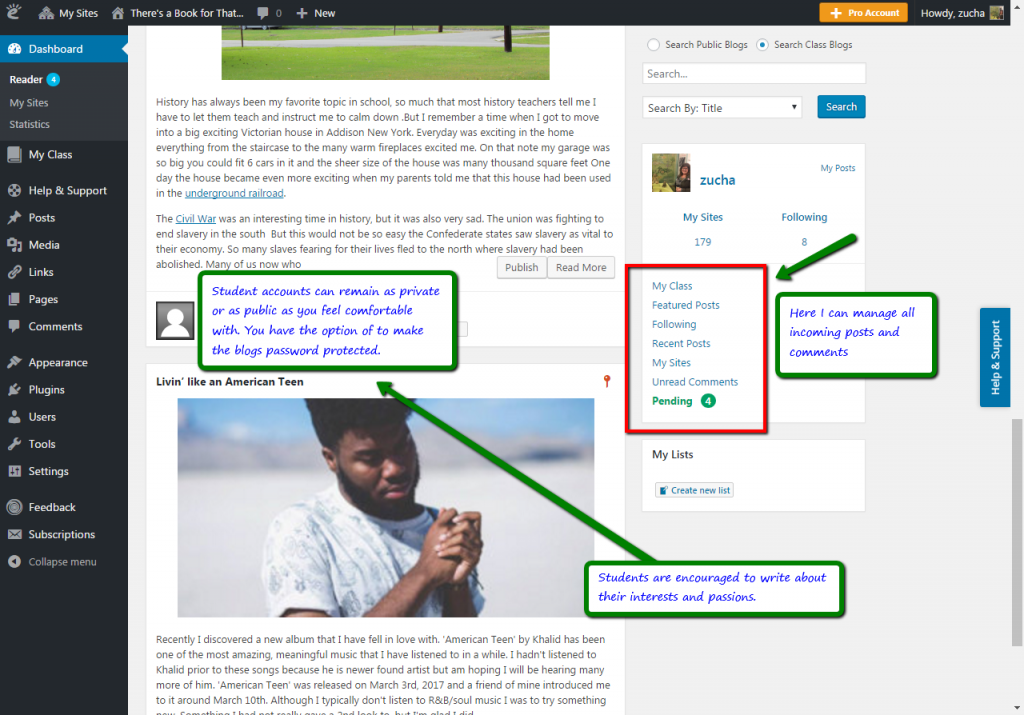Organic Casual Simple Email Newsletter by Jenna Zucha
Category Archives: Teaching
A Fresh Approach to the Personal Narrative
Having students start their writing journey through the lens of personal experience encourages them to stop and reflect on the moments, people, and places in their lives. Reflection can be difficult at any age, but students are rarely given an opportunity to dig deeper into what they have learned from their experiences, and more importantly, what others might also learn from those shared stories. Activities like this help build a writing community that will continue to grow as the school year progresses.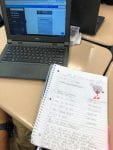
This year, I asked students to reflect on their life experiences by designing a book jacket that encompasses not only the memories that have impacted them the most but also encapsulates their personality, style as a writer, and images they feel represents them best.
The Process
Start with the writing:
Students start by creating a chart to collect the people, places, and moments that stood out in their minds as important or impactful. We spent several days flash drafting and conversing in small groups about our lives, friends, family, beloved pets, and fondest memories. I wanted students to know that writers write from their own lives; they write from places of both joy and pain.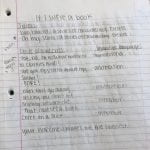
Mentor texts as Inspiration:
Students were encouraged to pick books for their independent reading that would reinforce the narrative style they are practicing in class. Memoirs, autobiographies or fiction told from the 1st person POV set the tone for our daily quick writes, discussions, and mini-lessons. I also shared my writing territories with them and modeled how helpful feedback can be during the writing and revising process.
Tech tools for creating and publishing:
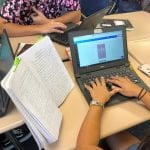 We used Canva.com to create our books. This on-line tool offers many free templates, designs, fonts, and images students can utilize to design a final product they are proud to share with their peers.
We used Canva.com to create our books. This on-line tool offers many free templates, designs, fonts, and images students can utilize to design a final product they are proud to share with their peers.
Publishing and sharing:
Projects are due on Tuesday, September 10. Students will come to class with a print out of their title page with a QR code that links us to the full version of the project. Writers will walk around reading each other’s work, leaving positive feedback for their peers, and celebrating their hard work. More pictures of that process to come!!!!
Sincerely,
Ms. Zucha
Building Leadership and Literacy by Shattering the Single Story
For the past few years, I have been using Chimamanda Ngozi Adichie’s Ted Talk, The Danger of a Single Story in my Pre-AP Leadership classes. In her message, she cautions writers and readers to be wary of the single story, which “emphasize[s] how we are different rather than how we are similar.” Adichie is the author of several amazing books, like Americanah and We Should All Be Feminists. I have her latest book, Dear Ijeawele, or A Feminist Manifesto in Fifteen Suggestions, on my “What to Read Next” list.
You can watch her describe her new book here.
In her Ted Talk, Adichie explains that “the problem with stereotypes is not that they are untrue, but that they are incomplete.” This aspect of her message has always resonated with my students. When I do the end-of-the-year surveys this lesson is brought up over and over again. I share this with them at the beginning of the school year, so for them to remember the message is a big deal, and it speaks volumes towards the power of Adichie’s influence.
Changing it up:
In the past, I would usually have the students watch the Ted Talk video, annotate the transcript, participate in a Socratic seminar, write a response, and move on. This year, we started by having a class discussion over the video and students generated a list of claims made by the author and points to extend. They discussed stories that have shaped their perspectives as children, marginalized groups who are underrepresented in film and other forms of art. This led them to the idea of potentially creating their own children’s book that would break a stereotype or tell a more socially responsible tale for a marginalized group. I had never done this before but I was excited to support them in taking ownership of their learning!
My students blew me away with the work they did! Some students updated classic fairytales, some used online tools like storybird and storyboardthat.com to create digital books, and some created entirely new storylines and plots to support a wide range of groups and topics.
We used mentor texts like
Students anal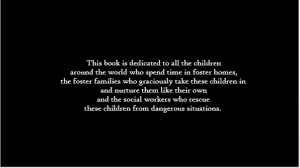 yzed the common elements shared by the mentor texts and discussed style, language, and formatting. We also considered how each author handled the delicacy of the topic and how you can create a forward or afterward to explain your thinking.
yzed the common elements shared by the mentor texts and discussed style, language, and formatting. We also considered how each author handled the delicacy of the topic and how you can create a forward or afterward to explain your thinking.
Here is a small sampling of the amazing products they came up with:
Students Reflecting on the Learning Process:
As a follow up to this assignment I had my students complete a reflection that asked them to analyze the project in 4 core areas;
- What lesson or takeaway do you have from this project?
- What challenges did you face working with a group and how did you attempt to overcome those challenges?
- What is your major contribution to the group and why were your skills or input invaluable?
- How would you extend this lesson or connect it with something else you have learned in another subject (History, Physics, Art, Math)?
I think this was my favorite part of this process. All of the responses were thoughtful and made connections to their lives outside of my classroom. Overall I am pleased with the results.
Celebrating Student Voice!!!!
Hello World,
I am so excited to share a few of the amazing posts my students have been writing this semester. I was really nervous to start this project with them, but they took the challenge head on. I am so proud of them and I enjoy reading about their interests, opinions on current issues, and their lives.
Here is a glimpse into our glorious Writer’s Corner. You can click on each image to read the full post.
Featured Post: Check out this student’s urban exploration of the local gems we have around this community and how it can inspire you to learn more about the people and the history.
From Flipping to Blogging: Making Positive Changes in the Classroom
I’ve made several changes this year that I am super excited to share and I have been wanting to make these changes for some time. Hopefully, you will find something in the post that interests you or at least inspires you to make some changes in your own classroom.
- Paperless classroom with flipped instruction: This is something that I have slowly been transitioning into for the past three years, and I am happy to say that I am now down to using less than 5% printed materials in my class. This is all thanks to Its Learning and other on-line tools like CommonLit, Edu blogs, and I converted many of my PowerPoint lectures into videos using screencast-o-matic and uploaded them to playposit to add embedded questions for the students to respond to. Check out the video below for more on using playposit as formative assessment.
All my class handouts and resources are posted on Its Learning. This has really cut down on the amount of paper I use and time spent making copies, but it has also eliminated many of the problems associated with student absences and missed instruction. Students can check Its Learning for detailed plans, lecture notes, and class assignments, or Skyward at any time to make up missing work. This summer I plan to create even more lecture videos and podcasts to use next year.
- Student Choice: This was a big shift for our entire department. In the past, I would assign 7-10 novels for the students to read throughout the year. With the advice of my wonderful and supportive Department Head, I began reviewing my practices to see why I was teaching these novels and considering what skills I was covering, I realized that many of the novels I continued to teach were out of habit or out of some personal satisfaction; I just really loved these books!
I found myself in a rut; I was just trying to guarantee that my students were reading, while they were trying everything to pass the quizzes and assessments without reading. This cat and mouse game was completely contrary to my teaching philosophy; therefore, I wanted to spend more time turning my students into real readers and writers.
To achieve this I scrapped the idea of class novels and went with a reader’s workshop method. Students are now reading what they choose, sharing great books with each other and with me, and they are demonstrating higher levels of thinking.
Rekindling my student’s desire to read and share what they are reading became my primary goal for the year and I think I have seen some positive results overall!
- Workshop Method: I also switched to a workshop method of teaching in which students are using journals, conferencing with me on what they are reading and writing, revising their writing as they learn new skills, and exploring several different types of writing that go beyond the 5-paragraph essay. The blog, Three Teachers Talk is a great resource for teachers who are interested in implementing the workshop method in their classrooms.
- Student Blogging: I am most excited about this development. Many educators have recently commented on the need for more authentic writing experiences for students, and can only be achieved by expanding the breadth of the possible audience(s) beyond the classroom teacher. Publication is an exciting and empowering way for students to explore the issues they are passionate about, and at the same time, it forces students to self-edit their writing for voice and purpose.
Grammar rules and stylistic conventions can’t be taught in isolation. The rule will mean nothing to the pupil until it is necessary to know the rule for their writing task. I take advantage of this by presenting my students with mini-lessons that cover the individual grammar needs of my students as issues organically arise in what they are writing.
I am participating in the blogging challenge (as you can tell by reading this post) and I am modeling the writing process for them right in class. I think it is important for them to see me struggle, change my mind about ideas and word choice, and scrap whole sentences or phrases that don’t quite work. The blogging challenge hosted by Edublogs/Wordpress makes this shift in writing very easy. With that said, this process has had its fair share of hiccups, but I am documenting all my hit and misses to share with my colleagues in the Fall.
Resources:
“Blogging With Students.” Blogging With Students – Teacher Challenges. N.p., n.d. Web. 31 Mar. 2017.
Leaving the 5 Paragraph Essay Behind: Creating Writers and Not Just Test-Takers
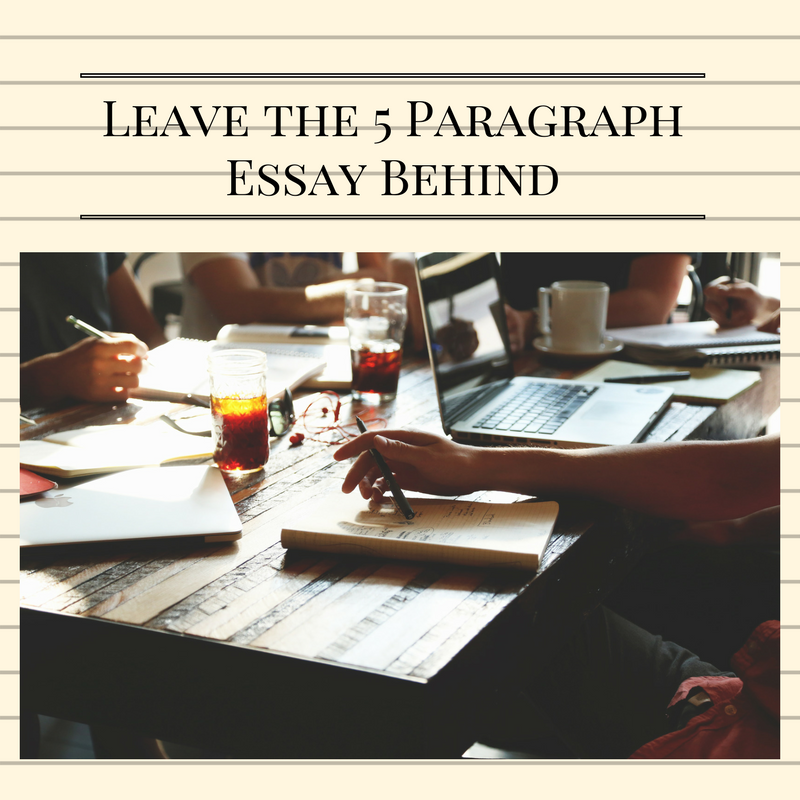 I want to begin by stating the obvious, I know I am no Virginia Woolf or Toni Morrison, but I do consider myself a writer. I write for myself, for academia, and for my career. I make sure that my students see me writing, and more importantly, I want them to observe my struggle and perseverance through the writing process.
I want to begin by stating the obvious, I know I am no Virginia Woolf or Toni Morrison, but I do consider myself a writer. I write for myself, for academia, and for my career. I make sure that my students see me writing, and more importantly, I want them to observe my struggle and perseverance through the writing process.
Letting my students see the mental roadblocks I face and the constant revisions I make while writing has done wonders for my student’s confidence and their willingness to take more creative risks while writing.
I am constantly reminding my students that writing for yourself and for the public is rewarding, but it can be extremely difficult because it opens your thoughts up to criticism, and challenges you to identify personal vulnerabilities.
My main goal as a teacher is to help my students become real writers and not just experts on the 5 paragraph essay. Let’s be real for a second, this type of formulaic writing will never show up in any other aspects of their lives, including college. I want my students to become writers because I know that writers use their brains in very special ways.
Qualities of a writer:
- observe the environments and people around them more closely
- a strong voice in life and in print
- are always thinking about and collecting new words
- are thinking about an issue or question long before they ever speak out on it
- pay close attention to what other writers are doing with their craft in a critical way
- are reading ALL the time, and reading a variety of texts
- are open to multiple perspectives
- foster a strong sense of empathy for the experiences of others
These are the traits I want to celebrate and foster in my students, so I aim to develop lessons that get my students thinking and acting like real writers.
Students Fostering a Love for Reading:
Here are a few of the great things I’ve seen in my classroom so far; students sharing and talking with other students about the books they are reading, a genuine excitement to tell me about their books, and students who never liked to read before devouring books and loving it!
During the first 9 weeks, I decided to incorporate an individual reading book project that would create an opportunity for students to share with their peers what they have been reading, publish their work outside of the classroom, and showcase their own talents and skills when designing their presentations and products. Some students created annotated soundtracks for their novels, shared Spotify playlists with their friends, and designed album artwork using Canva to compliment the themes or events in their novels. 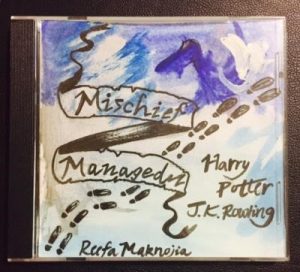 Some students started blogs or participated in blogs already created over the discussion of their chosen novels. Many students created character portraits and they researched different mediums that would best illustrate the style and personalities of their chosen characters.
Some students started blogs or participated in blogs already created over the discussion of their chosen novels. Many students created character portraits and they researched different mediums that would best illustrate the style and personalities of their chosen characters.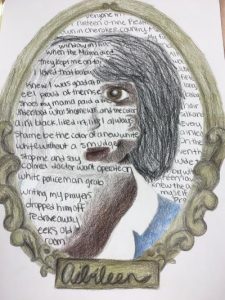 A few students decided to write letters to the author’s and are excitedly waiting for a possible reply. Students also had the opportunity to design their own projects to fit the needs of their chosen text. Photo stories, pamphlets to advocate, videos, recited monologs, and so much more. Every student embraced this opportunity and really impressed me with the level of work and creativity they put into it.
A few students decided to write letters to the author’s and are excitedly waiting for a possible reply. Students also had the opportunity to design their own projects to fit the needs of their chosen text. Photo stories, pamphlets to advocate, videos, recited monologs, and so much more. Every student embraced this opportunity and really impressed me with the level of work and creativity they put into it.
Some students created annotated soundtracks for their novels, shared Spotify playlists with their friends, and designed album artwork to compliment the themes or events in their novels.
I am seeing their excitement for reading extend into their writing as well. The workshop method has created so many opportunities for my students to collect new vocabulary and experiment with styles used by the author’s we are reading. My students are also adding experiences and perspectives to their own writing arsenal that they might never have considered before.
The Joy of Letting Go: Introducing Student Choice and Leadership in the English II Pre-AP Classroom
The final days of any school year are usually filled with a mixture of relief, excitement, and expectation. Students are pumped to finish their exams, turn in their books, and retreat through the school doors into a promising three month sojourn of staying up late, sleeping in, catching up on their YouTube subscriptions, and producing endless Snapchat stories that will immortalize their teen-angst in cyberspace for much longer than many of them realize. With all this budding freedom at their fingertips, the next book my students are going to read this summer is the farthest thing from any of their minds.
In the past, I would always end each school year with a smile and a strong sense of satisfaction because I knew that the books I had assigned throughout the year were rich with history, shared cultural experiences, and academic merit that would prepare them for the rigorous reading expectations of college.
How could this type of exposure and expected rigor ever harm my student’s academic progress? Well, I knew many of my students were reading and enjoying the books I had prescribed, but I also observed that their innate desire to read and seek knowledge outside of the assigned reading was low, and to my chagrin, many students would omit to only reading sections of the book that they knew they would be tested on. For an avid reader and a lover of literature, this realization was heartbreaking.
I think the unsettling reality that my students were not really becoming life-long readers when they left my classroom had suddenly burrowed in deep, and I knew I would have to make a change. Continue reading

